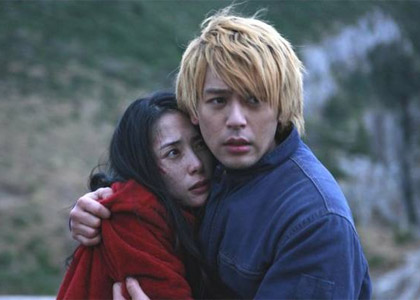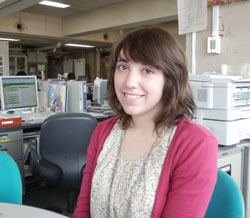Volunteer translators needed for JET alumni Japan disaster relief project
We may need a team of professional-level translators to help with an upcoming JET alumni project related to disaster relief efforts in Japan. Timing would likely be late September and October.
If interested, please e-mail Steven at jetwit [at] jetwit.com with “Translator” in the subject heading. No commitment necessary right now.
Reminder: You can also click here to join the JET Alumni Translators & Interpreters LinkedIn group.
Background:
Apologies for lack of detail at this point as the project idea is still in the process of being thought through by a couple JET alumni well-placed to set this up.
But the idea, generally speaking, relates to the fact that Japan’s non-profit/civil society sector and culture tends to be less established compared to that of the U.S. In the wake of the Tohoku earthquake/tsunami, many new Japanese organizations have formed and many existing small ones have taken on new roles and responsibilities.
One area they apparently tend to lack is familiarity with grant seeking and applying for grants. There are a number of U.S. foundations and other organizations that have been raising money but have struggled in trying to figure out how to get it to the organizations that could really use it. Part of the obstacle appears to be the grant making process. Grant making organizations tend to need to track and account for how money is doled out and used. And the application and reporting process are key.
Translation of many of these documents into English would of course be a key step for helping U.S. organizations in their efforts to communication with Japanese grant seekers. And this is of course a potentially significant way for the JET alumni community to continue to serve as a bridge to Japan.
Please contact Steven at jetwit [at] jetwit.com if potentially interested in helping.
Yoroshiku!
WIT Life #177: 子ども手当から児童手当へ
WITLife is a periodic series written by professional Writer/Interpreter/Translator Stacy Smith (Kumamoto-ken CIR, 2000-03). She starts her day by watching Fujisankei’s newscast in Japanese, and here she shares some of the interesting tidbits and trends together with her own observations.
It’s been a bit of hisashiburi since I’ve written here, but it’s nice to be back. Recently our government has seen its share of wrangling regarding the debt ceiling issue, and there has been similar discord among Japan’s political parties regarding the 子ども手当 (こどもてあて, kodomo teate)or child allowance. Originally one of the DPJ’s key campaign pledges and put into law in April 2010, it granted a uniform 13,000 yen per month to parents with children up to the age of fifteen. However, it has just been announced that in order to prioritize financial resources for the country’s recovery, it will be eliminated in October when it expires.
Next April, this allowance will be replaced by Read More
Former Yankee pitcher Hideki Irabu dies in apparent suicide; JET alum served as his translator
**************
Former star pitcher Hideki Irabu was apparently found dead in his apartment by friends.
Notably, former JETAA New York President George Rose had served as Irabu’s translator during his time with the Yankees when they won the World Series.
Rest in peace, Irabu-san. Thanks for the memories and for doing your part to bridge the culture gap.
WIT Life #176: 悪人
WITLife is a periodic series written by professional Writer/Interpreter/Translator Stacy Smith (Kumamoto-ken CIR, 2000-03). She starts her day by watching Fujisankei’s newscast in Japanese, and here she shares some of the interesting tidbits and trends together with her own observations.
First off a huge OMEDETOU to the Japanese women’s soccer team for winning the World Cup over the weekend! I watched the game with the Japanese delegation I have just begun interpreting for, and needless to say it made our night. The victory has been a nice boost of encouragement for the country, and is something all of its citizens can take pride in.
The Japan Cuts film festival at Japan Society is going strong in its second and final week, and in my next few entries I hope to discuss some of the great movies I’ve been seeing. But today I’d like to talk about another interesting film that made its New York premiere when it was screened last week as part of the Nippon Eiga series sponsored by ANA. It was 悪人 (Akunin) or Villain, and featured the two amazing actors Satoshi Tsumabuki (as the villain) and Eri Fukatsu (as the woman who falls in love with him). It was directed by Sang-il Lee who also made Hula Girls, another movie that was screened as part of ANA’s series a few years back.
Fukatsu received the Best Actress award at the Montreal World Film Festival last year for playing this role, a worthy performance. She and Tsumabuki always have great chemistry (I loved them in Read More
WIT Life #175: Japan Cuts 2011
WITLife is a periodic series written by professional Writer/Interpreter/Translator Stacy Smith (Kumamoto-ken CIR, 2000-03). She starts her day by watching Fujisankei’s newscast in Japanese, and here she shares some of the interesting tidbits and trends together with her own observations.
The 2011 Japan Cuts Film Festival at Japan Society is back and better than ever, with a lineup of 32 films and 33 screenings in total. Like last year, I decided to volunteer in various roles such as ushering and ticket taking, as that allows you to stick around and enjoy the movies. The first movie I worked at was Love & Loathing & Lulu & Ayano (名前のない女たち) which was screened this past Friday night.
Director Hisayasu Sato, known as one of the “Four Heavenly Kings of Pink” for his work in ピンク映画 (pinku eiga) or soft-core porn films, incorporated his background into this movie released in Japan last year. It tells the story of a meek OL who is scouted in Shibuya to work in Read More
WIT Life #174: Saga Setting the Nuclear Standard
WITLife is a periodic series written by professional Writer/Interpreter/Translator Stacy Smith (Kumamoto-ken CIR, 2000-03). She starts her day by watching Fujisankei’s newscast in Japanese, and here she shares some of the interesting tidbits and trends together with her own observations.
Yesterday’s NYT had an interesting article about Japan’s nuclear policy going forward. Increasingly local governments are being depended on to determine this, though they believe these are decisions the central government should be making. Currently the debate is taking place in the rural prefecture of Saga located in Kyushu, where battle lines are drawn between nuclear power plant operators who insist their facilities are safe and wary citizens. In the middle is Saga governor Yasushi Furukawa who is being looked to for approval or rejection of restarting two of the four reactors at the plant. After being shut down for routine maintenance, the question is whether Read More
WIT Life #173: Homeless by mandate
WITLife is a periodic series written by professional Writer/Interpreter/Translator Stacy Smith (Kumamoto-ken CIR, 2000-03). She starts her day by watching Fujisankei’s newscast in Japanese, and here she shares some of the interesting tidbits and trends together with her own observations.
Almost four months have passed since the earthquake/tsunami hit Japan, and one might think that after this amount of time things have gotten back to some semblance of normal. That seems to be the case for the most part in Tokyo, where except for limited electricity usage and the omnipresent uncertainty regarding radation levels, it is back to business as usual. However, for those who lived in the disaster area, it is a different story. I recently spoke to a close friend over Skype, who told me about her brother who had lived with his family in Tohoku.
They, like many others from the disaster zone, cannot be cleared to return home due to restrictions on entering areas that exceed a certain level of radiation. Instead, they have spent the last few Read More
WIT Life #172: Global Justice
WITLife is a periodic series written by professional Writer/Interpreter/Translator Stacy Smith (Kumamoto-ken CIR, 2000-03). She starts her day by watching Fujisankei’s newscast in Japanese, and here she shares some of the interesting tidbits and trends together with her own observations.
Last week New York Times columnist Thomas Friedman profiled the Harvard University political philosopher Michael J. Sandel. This professor’s classes were picked up by PBS and made into a television program that has attracted worldwide attention. Last year, Japan’s NHK TV broadcast a translated version of the series, which sparked a philosophy craze in Japan and prompted the University of Tokyo to create a course based on Sandel’s.
As Friedman details, the PBS series is now available at http://www.justiceharvard.org, and here you can find a thought-provoking discussion of the ethical and global implications of the 2011 Japanese earthquake and nuclear disaster among students in Tokyo, Shanghai, and at Harvard.
It is interesting to see Japanese students voicing their opinions in a proactive way, and I am curious to see what kind of feedback the university course has received since being introduced.
Japan Times article on Iwate CIR Amanda Krips
********
Thanks to Fukui JET Mike Maher-King for forwarding on this Japan Times article about Iwate CIR Amanda Krips.
JET coordinator finds Iwate spirit contagious
 MORIOKA, Iwate Pref. — Iwate Prefecture’s coast suffered some of the most severe damage in the March 11 quake and towering tsunami, where more than 4,500 people have been confirmed killed and 2,700 are still missing.
MORIOKA, Iwate Pref. — Iwate Prefecture’s coast suffered some of the most severe damage in the March 11 quake and towering tsunami, where more than 4,500 people have been confirmed killed and 2,700 are still missing.
But only about two hours by car inland, Morioka, the prefecture’s capital, was barely damaged by the 9-magnitude temblor. Residents only had to deal with a two-day power outage and a gas and supply shortage that lasted a few weeks, according to Amanda Krips, 24, an American who works for the prefectural government.
“Sometimes it makes it difficult to believe there is a total destruction only two hours away,” said Krips, who is on the Japan Exchange and Teaching Program and serves as coordinator of international relations for the prefecture.
Iwate has one of the fewest numbers of JETs. In addition to three coordinators, including Krips, there were 21 assistant language teachers this year. But the tsunami took the life of one of them, Monty Dickson. The 26-year-old from Alaska perished in Rikuzentakata where he taught English to elementary and junior high school students.
As the prefectural advisor for JETs in Iwate, Krips contacted her colleagues soon after the earthquake. Although she had phone numbers and email addresses, checking updates on Facebook was the fastest way to confirm their condition, she said. “Even if they didn’t have access (to the Internet) they could call their parents who would post on the wall.”
In about four days, a worried Krips was able to confirm the safety of all the JETs except Dickson. “He became the only person who we haven’t heard from. So after about a week I figured that it’s probably not going to be good news,” she said. Dickson’s body was found about a month later.
“It was difficult to know that someone I had known in person had died,” Krips said.
She went with her supervisor to Rikuzentakata for the first time when Dickson was found. “That was the first time I saw what happened, the extent of the tragedy. About 6 km from the coast I started to see debris on the riverside. You get into Rikuzentakata and nothing’s there. Basically destroyed. That was really hard to see,” she said.
Dealing with what happened and the radiation scare has been difficult and stressful to many, but Krips said the JETs didn’t panic and reacted in a reasonable manner. A few returned to their home countries for spring break but are back and teaching at their assigned schools, she said.
Many will finish their contract in August and new replacements will arrive. “The situation is fine here; there’s nothing to worry about. We’ll try our best to assure them that they are safe,” said Krips, who has another year in Iwate.
Having spent a year in Kyoto as a college student, Krips, originally from New Jersey, said that although Kyoto was a magical time, she likes Morioka much better, even after the quake.
“People here take a little bit longer to get past their shyness (than people in the Kansai region), but they are nice and genuine, and they’re pretty strong people. That’s what made living here so wonderful.”
Krips observed that people have been stoic about the tragedy. “I haven’t seen anyone curse nature. It happened, so we have to deal with it. I haven’t talked with very many people, but I think a lot of them have the purpose of rebuilding now.
“Everybody is working hard. They have smiles and they don’t complain or anything,” she said.
Krips has done a lot of translation of incoming letters of condolence from other countries sent directly to the prefecture. “I don’t think I can do very much for the reconstruction, but anything I can do to help relations between Iwate and people from other countries that might want to help, I’ll do my best with that,” she said.
JET Alum Launches Cross-Cultural Business Consulting and Training Service
JET alum Jennifer Jakubowski (Hokkaido, 1995-97) has launched Bridges To Japan, a cross-cultural business consulting and training firm.
Jennifer has been engaged in Japanese-American cross-cultural business consulting and training for a number of years, including work for the Nagano Winter Olympic Committee and cross-cultural training for numerous Japanese and American executives. She is also the author of Executive Guide to Japan: The ABCs of Japanese Culture & Business Etiquette.
For more information:
- Bridges to Japan website: www.bridgestojapan.com
- Jennifer Jakubowski bio
WIT Life #171: Radiation fallout (both literal and emotional)
WITLife is a periodic series written by professional Writer/Interpreter/Translator Stacy Smith (Kumamoto-ken CIR, 2000-03). She starts her day by watching Fujisankei’s newscast in Japanese, and here she shares some of the interesting tidbits and trends together with her own observations.
As more information comes out regarding the lack of disclosure as well as intentional cover-up that took place regarding Japan’s nuclear crisis, people are becoming more and more empowered. This article from Sunday’s New York Times details how citizens have begun protesting, a relatively rare action in Japan. This longer article from this morning’s NYT discusses how little PM Kan knew about what was actually happening.
Media reporting on this issue tends to be either sensational or opaque, so I really value the “on the ground” reports I periodically receive from friends in Tokyo. Here’s an excerpt from a recent mail (long but worth reading) from a close friend describing the continually changing information being provided to them, as well as her thoughts regarding the situation going forward. It provides a backdrop that illuminates why the normally docile Japanese have been taking to the streets:
“Here life is slowly returning to “normal,” but still lots of worries about the radiation affecting Tokyo and outlying areas. There are new setbacks to the nuclear plant situation each day and we wonder Read More
Japan Local: Hokkaido e-newsletter
Via AJET June 2011 Newsletter:
For anyone interested in learning about Japan’s northernmost prefecture, HOKKAIDO! The Red Brick Bulletin is an electronic newsletter published by the Hokkaido Government and prepared by the prefectural English language CIR (i.e., JET). Topics range from nature to history, cuisine to tourist attractions, and much much more!
http://www.pref.hokkaido.lg.jp/ss/tsk/akarenga_eng.htm
Job: CSI seeks bilingual location support professional (Nagoya)
Via JET alum Roy Harrison of the JETAA Bluegrass subchapter:
Another job listing from CSI, a JET alum-run company based in Kentucky. (See previousJETwit post about CSI.)
Bilingual Location Support Professional
We’re looking for a full-time bilingual location service professional with a great attitude, in-depth knowledge of office procedures, dogged persistence, expert communication skills, and the utmost discretion. From Japanese language instruction to supporting ex-pats living in the Nagoya/Toyota area, our ideal candidate will be committed to doing whatever it takes to make sure clients are successful abroad. As a facilitator of efficient and productive communication, you should be able to work both independently and as part of a team.
You’ll need a hands-on understanding of Nagoya/Toyota in order to provide the highest quality assistance. Some experience in negotiating real estate terms in Japan is beneficial. You need to be proficient in typical office software packages, have proven strong organizational skills, and be enthusiastic about working across cultural boundaries. The successful candidate will be working in a fast-paced environment with a varied workload, so we need a quick learner and great communicator who works well under pressure while being able to discern the forest from the trees.
If you’re a consummate professional with a passion for communication and a love of challenges, come join our successful team. Send a cover letter and résumé to hr@csi-ky.com.
Consultant Solutions, Inc. is an Equal Opportunity Employer. We will provide training and a support network. We will also consider relocation and/or visa support for the right candidate.
WIT Life #170: Super Cool Biz
WITLife is a periodic series written by professional Writer/Interpreter/Translator Stacy Smith (Kumamoto-ken CIR, 2000-03). She starts her day by watching Fujisankei’s newscast in Japanese, and here she shares some of the interesting tidbits and trends together with her own observations.
Newspaper articles from this week have highlighted Japan’s handling of energy challenges in the wake of the earthquake and tsunami, and subsequently damaged nuclear power plants. The first from the Wall Street Journal talks about the development of a new summer style called “Super Cool Biz” in response to a government decree to conserve electricity (節電 or setsuden) by 15%, or setting workplace temperatures to 82 degrees!
This new effort builds on the previous “cool biz” campaign, but takes it a step further by Read More
WIT Life #169: Happy Doll Fundraiser





